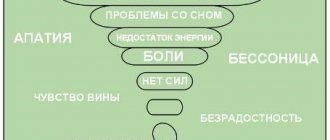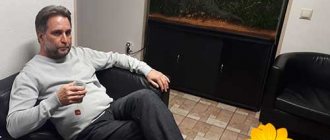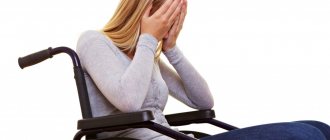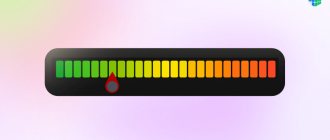In addition to pharmacological and psychotherapeutic treatment of depression, other methods have been proposed for its treatment.
Such methods of treating depression, often effectively combined with pharmacotherapy and psychotherapy, include: intravenous laser irradiation of blood, magnetic stimulation (transcranial low-frequency alternating magnetic field therapy, right-sided pair-polarization therapy), extracorporeal detoxification (plasmapheresis), periodic normobaric hypoxia, craniocerebral hypothermia, light treatment, sleep deprivation, dietary therapy (including its fasting options), balneotherapy (warm baths have been used for a long time to alleviate the condition of a person who is depressed), massage and physical therapy (breathing exercises and physical activity helps to alleviate the symptoms of depression).
Among biological methods of treating depression, electroconvulsive therapy occupies a special place.
| Find out more: Inpatient treatment for depression |
Intravenous laser irradiation of blood
According to the recommendations of domestic scientists, intravenous laser irradiation of blood should be carried out using a low-intensity helium-neon device (FALM-1). The wavelength of laser irradiation is 0.63 microns. The radiation power at the output of the light guide is 8 mW. Session duration is 15 minutes, course of therapy is 8-12 sessions. It was noted that after laser therapy while taking psychopharmacological drugs, the severity of depressive symptoms in 60% of people suffering from depression is almost halved. Patients with manifestations of apathy and melancholy are especially sensitive to laser therapy; a less clear effect is observed in complex depressive syndromes, including symptoms of depersonalization, obsessive states and hypochondria. Laser therapy is ineffective for anxiety and depression. It should be borne in mind that the effect of laser therapy as a non-drug treatment method, as well as of treatment with antidepressants, may be delayed and appear some time after completion of the course of treatment. Currently, there are various modernizations of laser therapy. An example is a differentiated method of low-intensity magnetic laser therapy. This method of treatment includes an individual stage program of a course of combined laser exposure, which consists of venous irradiation of the tissue with continuous red light (0.63 μm) and transcutaneous irradiation with pulsed infrared light (0.89 μm) of projections of a number of biologically active zones and organs using standard magnetic attachments. Laser irradiation usually does not cause side effects or complications.
Causes of depression in women
There are many reasons for depression. Let's look at the most common reasons.
Biological characteristics of the female sex
They say that the female body is a battleground of hormones. There is some truth in this, just remember the well-known PMS, which is accompanied by mood swings, sadness, and tearfulness. Women are also more emotional, sensitive, empathic, and anxious, and this also affects the occurrence of depression.
PMS and depression
Premenstrual syndrome, or PMS, does not itself cause depression in women. Yes, this is an unpleasant period during which the mood deteriorates, irritation, anxiety, and anger appear. But after the start of menstruation, the condition returns to normal. But there is another disorder associated with the menstrual cycle—PMDD, or premenstrual dysphoric disorder—that can lead to depression. With PDMR, severe mood swings, panic attacks, and thoughts of suicide occur. This condition lasts longer than PMS and subsides with the onset of menstruation. But the periods of calm are quite short - about a week. The rest of the time the woman experiences enormous stress. Antidepressants are often prescribed to correct PDMR.
Age-related changes
As a woman ages, hormonal changes occur in her body, which can cause depression. For example, teenage girls often suffer. Mood swings, depression, apathy, experiments with alcohol and drugs are not always caused by a bad character or a desire to rebel. It is worth taking your child to a specialist to rule out depression.
Postpartum depression
The female body has enormous resources, both physical and emotional. But giving birth to a child requires a lot of effort. Depression after childbirth is quite common. The main causes are hormonal changes, lack of sleep, and genetic predisposition. Postpartum depression interferes with the connection between mother and child. The woman experiences a feeling of depression, fear, anxiety, irritation, disgust for the child, guilt, and apathy. If we talk about the negative consequences of postpartum depression, the most dangerous is suicide, and sometimes the murder of one’s own child. Without treatment, this type of disorder becomes chronic. If you notice symptoms of postpartum depression in your wife, sister, mother, friend, then this is a reason to urgently consult a doctor!
Post-wedding depression
Such a joyful event as a wedding can also cause depression. After a long preparation for a significant day, after stress and tension, an emotional decline sets in. The goal has been achieved and it is not very clear what to do next. Post-wedding depression can be identified by feelings of emptiness, apathy, irritability, and insomnia. In this case, a psychotherapist can begin treatment if the psychiatrist does not diagnose more serious disorders that require medication.
Psychological problems
Women are more emotional and susceptible to stress. Psychogenic depression occurs precisely because of psychological problems. A strong shock, such as the death of a loved one, can cause a loss of meaning in life. The psychotype plays an equally important role. Lack of self-confidence, closedness, and hypersensitivity make you react sharply to problems. At some point, a woman gets tired of struggling with difficulties and becomes depressed. She can hide it for a long time, but sooner or later the disease will become chronic. Sometimes parents do not notice depression in their teenage daughter, attributing the symptoms to puberty and psychological problems.
Social aspects
Inconsistency with various social attitudes can also cause depression. For example, being fired from a job brings up thoughts of one’s own incompetence and worthlessness. The inability to give birth to a child is associated with female failure. The absence of a man is associated with inferiority. The impetus for depression can be any discrepancy with social norms. Constant feelings of guilt, shame, and the desire to isolate from the world lead to chronic depression.
Chronic illnesses or long-term use of medications
Chronic diseases greatly affect the general emotional state of a woman. Very often, depression is difficult to notice due to the fatigue, depression and melancholy associated with the disease. For example, chronic pain causes changes in the nervous system due to constant suffering. The woman becomes irritable, depressed, apathetic. Medicines also affect biochemical processes in the body. Some of them cause depression, which the doctor must warn about. While treating one disease, it is important to notice another. This is one of the common mistakes - the doctor writes off the patient’s condition as the main diagnosis.
Hereditary predisposition to depression
A genetic predisposition to depression is inherited. If one of your close relatives suffered from bipolar disorder, drug or alcohol addiction, or suicidal tendencies, then the woman will inherit one of the forms of mental disorder. The tendency to depression is usually transmitted through the female line. It happens that several generations of women suffer from an illness, but continue to attribute this to character traits, stress and other external factors. But, as a rule, we are talking about endogenous depressions.
Environment
The time of seasonal depression is spring and autumn. At these times of year, a woman feels melancholy, sadness, sadness. Lack of sun, which affects vitamin D production, only makes symptoms worse. It happens that “seasonal exacerbations” become chronic and the weather outside ceases to play a role.
Electroconvulsive therapy
Currently, one of the most effective non-drug methods of treating depression is electroconvulsive therapy, which is used both as an independent method of treatment and in combination with other methods of therapy (Nelson A.I., 2002).
Electroshock therapy methods have been used since ancient Greece. In the temples of Asclepius, depression was treated with electric snakes. In the Middle Ages, it was believed that a strong shock to a patient could bring him out of a state of depression.
Treatment of depression with electric shock was recommended by Hill in 1814 (commotions electriques) (Kempinski A., 2002). Particular interest in this method of treating depression was noted in the early forties of the twentieth century. Electroconvulsive therapy is now generally recognized to be highly effective in treating depression.
It is difficult to overestimate the importance of electroconvulsive therapy for those patients for whom pharmacological treatment is contraindicated (pregnancy, certain somatic diseases, etc.), as well as if it is necessary to overcome depression resistant to other types of therapy.
Typically, to obtain a therapeutic effect from electroconvulsive therapy, about 8-10 shock discharges are required at a frequency of 3 sessions per week.
Subject to monitoring the condition of patients, it is possible that they can be treated with ECT on an outpatient basis or as a day treatment for depression in a hospital.
In general, the combination of ECT with antidepressants is not recommended; the use of small doses of tranquilizers is possible.
Complications of electroconvulsive therapy include spinal injury and circulatory disorders, states of confusion after convulsive attacks, as well as periods of anterograde and retrograde memory impairment have been reported. The latter can persist for a month after the end of ECT. ECT causes a temporary rise in blood pressure (often to quite high levels) and increases the heart rate.
Relative contraindications to ECT include coronary heart disease and arrhythmias, as well as some location of the brain tumor.
Most patients are afraid of this method of therapy, so the importance of professional psychotherapeutic work with the patient, as well as its subsequent support during the ECT therapy itself, should be emphasized.
What are the benefits of hypnosis and how does it work?
The doctor influences a person’s mental state using hypnosis, which performs the following functions:
- Helps to free oneself from attitudes and negative thoughts. Replaces them with optimistic ones.
- Appeal to the subconscious. It is a hidden part of a person that is rarely used. But it is an important resource.
- Relieves the internal mechanisms that caused the formation of depression.
- Finds the true causes of depression and gathers strength to get rid of it.
Treatment of depression with hypnosis is an effective procedure that works comprehensively. It not only relieves symptoms, but also cures the disease and its causes. Let's look at the benefits of treating depression with hypnosis in our center:
- The ability to overcome severe and prolonged depression. This is done by using the resources that are hidden in a person. They help restore good health.
- Immersion in a state of hypnosis frees you from the framework dictated by the physical body. This helps to get positive emotions from your own capabilities.
- Hypnosis allows a patient who suffers from depression to gain control over their consciousness. This will help cope with future depression at an early stage.
All this proves that treating depression with hypnosis in St. Petersburg is very effective.
Magnetic stimulation
Repeated transcranial magnetic stimulation (TMS) was proposed for the non-drug treatment of depression in 1985 (Barcer A., et al., 1985). This method of treating depression, as well as vagal nerve stimulation, currently represent new methods of treating depressive spectrum disorders.
Low-frequency transcranial magnetic stimulation has been proposed as an alternative treatment for depression to electroconvulsive therapy where stimuli do not reach the seizure threshold.
Compared to electroconvulsive therapy, this treatment method has an important advantage: a more precise effect on those brain structures that are involved in the pathogenesis of depression (hippocampal region). In addition, with TMS there are no cognitive impairments that occur after ECT. However, if the effect of TMS and ECT treatment is approximately equal in the treatment of mild or moderate depression, then in the case of severe depression ECT may become a more preferable method (Grunhaus L., et al. 1998).
Studies have shown that TMS induces changes in beta-adrenergic receptors similar to those that occur after ECT and has a positive effect on astroglial tissue in the brain.
TMS has proven effective not only in the treatment of depression, but also in the treatment of schizophrenia, obsessive-compulsive disorder, and post-traumatic stress disorder (George M., et al., 1999). However, it was noted that the positive effect of TMS in the treatment of depression is observed only in 50% of cases. In addition, most patients experienced frequent relapses of depression after several months of remission following TMS. The combination of high-frequency and low-frequency magnetic stimulation appears to be more preferable for the quality of remission and its duration.
From the point of view of the pathogenesis of depression, the method of cyclic transcranial magnetic stimulation seems promising, since weak magnetic fields can reduce circadian rhythms (Mosolov S.N., 2002). Currently, this method of therapy is used to overcome treatment-resistant depression.
The first TMS studies proved the superiority of fast stimulation over slow stimulation, however, the number of such studies was quite limited and the area of influence was not precisely localized. Recent studies show a higher effectiveness of low-frequency magnetic stimulation compared to high-frequency (Klein E., et al., 1999).
Typically, magnetic stimulation is carried out using a unilateral technique: on the projection of the left dorsolateral prefrontal region (high frequency or fast stimulation - < 10 Hz), less often stimulation of the right prefrontal region is performed. Low-frequency magnetic stimulation affects a selective area of the anterolateral prefrontal cortex of the left hemisphere.
A course of low-frequency magnetic stimulation for non-drug treatment of depression is 10 sessions, with an average duration of 30 minutes. Sessions are held every other day; stimulation parameters - 1.6 T/1 Hz. The therapeutic effect is noticeable after the first therapy session and most often manifests itself as calming, reducing the severity of anxiety, and restoring sleep. This method is of interest due to the rapid development of effect and the absence of complications. As noted above, unlike ECT, TMS does not require the use of anesthesia.
Treatment of depressive disorders
Date of publication: 08/12/2020 Articles
By now it can be said that the vast majority of cases of depression respond well to treatment. According to modern views, effective treatment of depression consists of a combination of pharmacotherapy, psychotherapy and, if necessary, other types of treatment. At the same time, the main role in therapy, of course, belongs to antidepressants - drugs specifically designed for the treatment of various types of depression.
The creation of antidepressants is based on the discovery of scientists that depression develops as a result of a disruption in the mechanism of biochemical transmission of nerve impulses in the parts of the brain responsible for mood. These same mechanisms regulate behavior, response to stress, sleep and wakefulness, and appetite. Thus, depression is not a whim, not a manifestation of laziness. This is a consequence of disruption of biochemical processes in the brain.
A decrease in the amount of neurotransmitters (substances that transmit impulses from neuron to neuron) in the synaptic cleft causes symptoms of depression. The ability of some drugs to increase the concentration of neurotransmitters in the synaptic cleft in one way or another allows them to be used as antidepressants.
Nowadays, antidepressants are used in Russia, which can be roughly divided into 4 generations based on the time of their creation.
The first antidepressants to find widespread clinical use were drugs with a tricyclic structure: amitriptyline and imipramine. They have a fairly powerful effect on most depressive conditions by blocking the reuptake of both norepinephrine and serotonin. However, these drugs have unwanted side effects that dramatically reduce the quality of life of patients during treatment. It has been observed that up to 50% of patients refuse to take tricyclic antidepressants due to severe side effects. For the same reason, doctors are increasingly less likely to prescribe these drugs to patients on an outpatient basis.
The situation was somewhat improved by the introduction into practice of second generation drugs - tetracyclic antidepressants, which, along with the ability to block the reuptake of norepinephrine and serotonin, could also affect some other receptors. Being analogues of tricyclic compounds, these drugs have comparable antidepressant activity, but unlike their predecessors, they are safer because they are much less likely to cause unwanted side effects. In general, these drugs can treat mild to moderate depression, but are ineffective in patients with severe depression.
Today, III antidepressants that act on the serotonin metabolic system, preventing its reuptake in the synaptic cleft have received widespread recognition. Based on the mechanism of action, these antidepressants are combined into the group of selective serotonin reuptake inhibitors. In addition to treating depression, they are used to correct eating disorders, level out panic disorders, social phobias, various obsessive states and chronic pain symptoms. In addition, these drugs have minimal toxicity and are well tolerated by elderly patients. However, some researchers note the insufficient effectiveness of third-generation antidepressants in the treatment of severe forms of depressive conditions, probably associated with selective activity in relation to only one neurotransmitter - serotonin.
More effective antidepressants - IV generation drugs - selectively block the reuptake of both serotonin and norepinephrine, without affecting other neurotransmitter systems and having minor side effects. Their antidepressant activity in the treatment of patients with severe and moderate depression has been confirmed in a number of specially conducted studies, which simultaneously showed that these drugs are well tolerated.
For extremely severe depression that does not go away despite the use of the most powerful antidepressants, electroconvulsive therapy (ECT) can be effective, but such situations are rare and require careful justification by a committee of doctors and the consent of the patient.
Antipsychotics play a significant role in the treatment of some forms of depression.
In drug therapy for depressive conditions, an unconventional, strictly individual approach is used, with the obligatory provision of fruitful cooperation between the patient and the doctor. The patient’s faith in the possibility of recovery, the absence of prejudice against the “harm” caused by psychotropic drugs, and systematic adherence to the doctor’s prescriptions largely contribute to the achievement of therapeutic success.
Drug treatment for depression takes time. You should not expect a complete cure in the first days of taking the drug. It must be remembered that all modern antidepressants begin to act on depressive symptoms no earlier than 1-2 weeks after the start of treatment. Only a psychiatrist should discontinue antidepressants, as well as prescribe them. Drugs are usually discontinued no earlier than 6 months after normalization of the mental state. Even after all symptoms of depression have completely disappeared, do not rush to stop taking the drug yourself, as there is a risk of exacerbation of the disease. Patients often make the mistake of stopping medications prematurely after significant improvement or due to “forgetfulness.” Termination of therapy is fraught with serious troubles for the patient.
Along with drug treatment, a patient suffering from depression is offered psychotherapy: individual, family, or group. An important element of social rehabilitation is participation in mutual support groups for patients who have suffered from depression. This allows other patients to feel help and understanding of their problems, and to realize that they are not alone in their problem.
If you feel signs of depression, contact a mental health service or call the helpline +7(8652) 99-17-86
The material was prepared
by the Stavropol Psychiatric Hospital based on information from the National Center for Mental Health ( https://www.psychiatry.ru
) and WHO.
Watch and read us on social networks
The illustration for this publication was taken from the public image library https://www.freepik.com/ and from open sources.
You can read in detail about using illustrations from the Freepik library here
Vagal stimulation
Vagal stimulation for the non-drug treatment of depression was proposed in 1994 (Harden C., et al., 1994). When conducting vagal stimulation, areas of the lateral and orbital regions of the anterior parts of the brain, as well as the parabrachial nuclei of the nerve and the locus ceruleus region are affected. The impact on the last part of the brain ensures that this method influences the functional activity of the thalamus and hypothalamus.
After the use of vagal stimulation, an increase in the content of biogenic amines in the limbic region of the brain was noted (Ben-Menachem E., et al., 1995)
Treatment of depression with antidepressants
Treatment with antidepressants is just one of the methods of combating depression, which is part of a full course. In severe forms of mental disorder, antidepressants are a necessary measure; such drugs allow you to quickly cope with the problem and reduce the severity of the disease.
Note! It is impossible to completely overcome depression with antidepressants alone. Medicines help overcome the “crisis” and improve the condition, but after stopping taking them there is a high probability that depression will return. For this reason, an integrated approach is so important; in addition to antidepressants, the work of a psychotherapist is needed to help the patient change his thinking algorithms and understand how to live further, how to get rid of the problem.
In addition, treating depression with antidepressants is extremely dangerous if not used carefully. Such medications should only be prescribed by a doctor, calculating the daily dosage, frequency and duration of their use. Their appointment should be carried out within the walls of the clinic, where the medical staff constantly monitors the patient’s condition, assessing the dynamics of treatment and taking the necessary actions in a timely manner.
Sleep deprivation
A relatively gentle non-drug treatment for depression is sleep deprivation, which was actively developed in the early 70s of the twentieth century. Three types of sleep deprivation were used: total, partial and selective. Total sleep deprivation involves being awake for 36-40 hours, partial sleep deprivation means sleeping from 5 pm to 1 am, then staying awake until the next evening or sleeping from 9 pm to 1 hour 30 minutes then staying awake until the next evening - sleep duration 4, 5 hours and selective sleep deprivation, focused on selective deprivation of only REM sleep. For the treatment of depression with symptoms of melancholy, the combination of total sleep deprivation with light therapy at night turned out to be most effective. It should be noted that with complete sleep deprivation, lethargy and drowsiness are more often observed. In most cases, sleep deprivation is carried out two days later on the third; the therapeutic course includes an average of 5 sessions.
Sleep deprivation, both partial and complete, changes the structure of sleep, lengthens the latency period and reduces the duration of rapid eye movement (REM) sleep. As a rule, an improvement in mood in patients is observed after just one sleepless night, however, this effect is usually short-lived and lasts about three days. Improvement in mood occurs gradually, expressed in the form of a feeling of general relief, a decrease in the feeling of lethargy, apathy, and the disappearance of experiences of mental pain and bitterness.
In prognostic terms, the relationship between the change in the mood of a depressed patient after the first and second sleepless night is important.
The mechanism of the therapeutic effect of sleep deprivation is difficult to reduce only to the simple elimination of one of the phases of sleep or the resynchronization of a time-shifted circadian rhythm. Probably one of the mechanisms for improving the condition of a depressed patient after sleep deprivation is the activation of adrenergic structures.
Light treatment
Non-drug treatment of depression has been tried for more than twenty years using light, hoping to normalize human biological rhythms altered by the disease. Natural ways to treat depression include taking a temporary vacation in the winter to places where there is more daylight and longer hours. In addition, prolonged exposure to the street on sunny days helps overcome depression. Light therapy or phototherapy is most indicated for seasonal mood disorder, especially if episodes of worsening depression occur in the winter or spring seasons. According to some authors, with a course of light therapy from three to fourteen days, the effectiveness of this method reaches 60-70%.
It has been experimentally proven that changes in biological rhythms occur when the patient is illuminated with a light source of increased intensity. Attempts have been made to prevent seasonal exacerbation of affective psychosis by “lengthening the daytime period” using artificial lighting and sleep deprivation.
It is assumed that bright and intense light has a multifaceted effect on the centers of circadian rhythms: suppression of the secretion of the pineal gland hormone melatonin, changes in the concentration of cortisol and adrenocorticotropic hormone, increased synthesis of catecholamines, normalization of the function of the autonomic system. Most experts associate the positive effect of light therapy with an increase in the regulatory function of the cerebral cortex, as well as with the normalization of the activity of the autonomic system.
During light treatment, the patient stays daily, preferably in the morning, for several hours (less than half an hour) in a brightly lit room or next to an intense light source specially designed for this purpose.
It was previously believed that to obtain a therapeutic effect, a room illumination of at least 2600 and no more than 8000 lux was required. Such illumination was achieved by using incandescent lamps located on the ceiling of the chamber at a height of about 2.5 meters. Typically about 30 200 W incandescent lamps were used. It was noted that the effectiveness of light treatment increases when the therapeutic room is painted white or green, as well as when the patient’s body is exposed to the maximum (more than 25%).
Before starting light therapy, the patient is carefully examined, usually paying attention to the state of the autonomic system and indicators of the cardiovascular system.
Long therapy sessions were recommended - from 1.5 to 3 hours, with a total number of sessions - 15, however, it was emphasized that these numbers, as well as the time of the therapy session, should be determined based on the characteristics of the clinical picture of depression. Currently, 30 minute phototherapy sessions are recommended.
Some researchers recommend light treatment at any time of the day, both daily and with two- to three-day breaks. Phototherapy sessions are especially effective in the morning, immediately after waking up.
During the therapy session, patients, who are asked only to keep their eyes closed, are free to move around the room. To avoid getting used to the light, once every 3 minutes. should be looked at periodically for 1 second. on the lamps.
After a therapeutic session, there may be an increase in blood pressure, less often a decrease, probably due to the thermal effect, the body temperature usually increases. Quite often, patients report slight drowsiness. Changes in the RR interval on the ECG can be a reliable predictor of the effectiveness of light therapy. In some cases, the therapeutic effect is possible both during the session and 2-3 days after its completion.
The most common complications of phototherapy are: insomnia, increased fatigue, irritability, headaches. These complications usually occur in people who try to work hard during light therapy.
It is interesting to note the sensitivity to light therapy in patients with symptoms of anxiety. Patients with symptoms of melancholy and apathy respond to this type of therapy to a lesser extent. Speaking about the mechanism of the therapeutic effect of this therapy, we should emphasize the thermal effect of light. General contraindications to light treatment are cancer and eye pathology.
Currently, special table-top and stationary devices have been developed for non-drug treatment of depression using light. Full spectrum lamps are more effective because they produce light that is close to natural light. To ensure that the patient does not suffer from light treatment, special filters are used that block ultraviolet rays and thereby protect the patient’s retina from intense radiation (prevention of cataracts).
Recent studies have shown that the effectiveness of light exposure is determined by three characteristics: intensity, spectrum and exposure time. In connection with the above, phototherapy techniques are being developed to enrich the light flux with long-wave ultraviolet radiation, which has a biologically active effect. This technique involves using a full-spectrum light source, since it is as close to natural light as possible.
Modern achievements of phototherapy include “artificial dawn” (a special electric lamp at the patient’s bedside that intensifies its illumination before dawn).
More about treatment
How does a consultation with a psychotherapist and psychotherapy sessions work?
Any treatment begins with a consultation, at which the doctor diagnoses the psycho-emotional state, clarifies the patient’s personality, the conditions surrounding him, concomitant diseases, outlines additional examinations (if necessary) and draws up a treatment plan. A consultation with a psychotherapist lasts 30-60 minutes.
Complete treatment usually includes an integrated approach:
- Psychopharmacotherapy
Prescription of modern antidepressants (drugs that reduce the severity of painful experiences, eliminate excessive anxiety, relieve mental pain and at the same time do not impede the normal course of mental processes and do not make a person weak-willed or inhibited), nootropics (drugs that improve metabolic processes in the central nervous system, normalize memory , attention), mood stabilizers (medicines that keep mood within the limits of natural fluctuations and do not allow emotions to go “off scale”). - Physiotherapy
To increase the production of endorphins (TES therapy). - Binaural therapy
Synchronization of interhemispheric interactions. - Acupuncture
- Psychotherapy
A variety of psychotherapeutic techniques are used - from rational, individual psychotherapy, autogenic training, cognitive psychotherapy, suggestions in different states of consciousness, neurolinguistic programming - to group psychotherapy.
Contact a specialist
Sign up for a consultation tel. 242-82-65
Make an appointment
Dmitry Roaldovich Sosnovsky
Psychiatrist-narcologist
Total medical experience is 33 years, of which 18 years in the field of psychotherapy and narcology. Author of many articles on psychotherapeutic topics
Biofeedback
Non-drug treatment methods include biofeedback, which by and large refers to psychotherapeutic methods of treating depression. To carry out this method of treatment, special psychophysiological equipment is used, which implies the possibility of printing various psychophysiological indicators: bioelectric activity of the brain, muscles, heart, galvanic skin response, etc. 20-25 sessions of therapy are carried out, based on the use of biofeedback and aimed at increasing power of alpha waves in the left occipital region. Most patients experienced a 50% reduction in the severity of depressive symptoms.
Get rid of depression
Depression is a type of emotional disorder. All people are characterized by emotional reactions: we react to pleasant events with a feeling of joy; to negative events, a reaction in the form of sadness and sadness is also adequate.
Correct diagnosis and treatment of depression helps to significantly improve the quality of life, and sometimes even save life, because... with severe depression, melancholy and a feeling of hopelessness push one to commit suicide.
If you or your loved ones have problems in the field of mental health - fears, anxiety, bad mood - contact the Clinic of Professor F. F. Preobrazhensky. Here they will understand and help you.
Contact a specialist
Sign up for a consultation tel. 242-82-65
Make an appointment
Mikhail Samuilovich Pruss
Psychiatrist-narcologist
More than 25 years of experience Author of popular books on alcohol and drug addiction
Therapeutic massage and breathing exercises
Auxiliary methods for treating depression include breathing exercises, therapeutic massage (especially if the onset of depression is triggered by mental trauma) and meditation.
Such breathing on the seashore, in a pine forest, is useful, since such breathing increases the amount of oxygen. The massage is usually performed for 30 minutes and its therapeutic effect is associated with a decrease in stress hormones in the blood. In addition, massage relieves internal tension and normalizes sleep.
Diet food
The effectiveness of dietary nutrition as a non-drug treatment for depression has also not been confirmed by scientific research.
However, it is generally accepted that the diet of a patient with depression must necessarily include complex carbohydrates, which naturally contribute to an increase in the production of serotonin by brain neurons, the deficiency of which during depression (especially with symptoms of anxiety) is well known. Complex carbohydrates are found in legumes and whole grains. An increase in the production of norepinephrine and dopamine - neurotransmitters, the concentration of which is reduced in depression with symptoms of apathy, is promoted by a diet high in protein (beef, poultry, fish, nuts, eggs). At the same time, there is an opposite point of view about the inadmissibility of a high protein content in food that should be consumed when suffering from depression. It is recommended to exclude sugar, alcohol, caffeine, convenience foods and canned food. Foods high in saturated fatty acids are undesirable. Return to Contents







